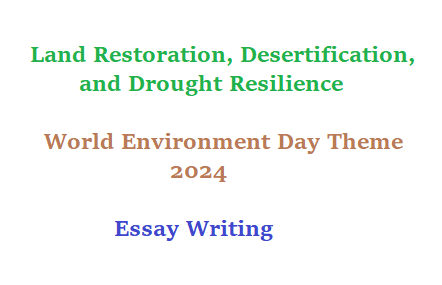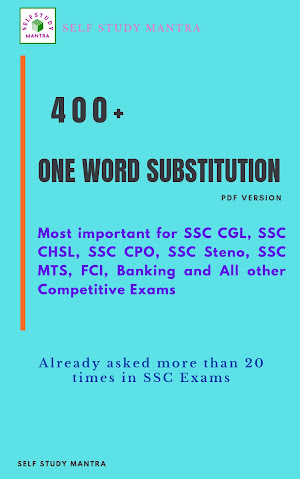Essay on Land Restoration, Desertification, and Drought Resilience is one of the important essay topics as Land Restoration, Desertification, and Drought Resilience is theme of World Environment Day 2024. Lets see Essay on Land Restoration, Desertification, and Drought Resilience.
Essay on Land Restoration, Desertification, and Drought Resilience
In an era marked by environmental degradation and climate change, the imperative to restore and conserve land, combat desertification, and enhance drought resilience has never been more pressing. Land restoration, the process of reversing the degradation of soils and ecosystems, holds the key to sustaining livelihoods, preserving biodiversity, and mitigating the impacts of climate change. Coupled with efforts to combat desertification and build resilience to drought, it forms a crucial pillar of global environmental sustainability initiatives.
Land Restoration:
Land restoration involves a range of practices aimed at rehabilitating degraded landscapes, revitalizing ecosystems, and improving soil health. Afforestation and reforestation efforts play a vital role in restoring degraded lands by enhancing carbon sequestration, preventing soil erosion, and providing habitats for diverse flora and fauna. Additionally, sustainable land management practices such as agroforestry, conservation agriculture, and watershed management promote soil conservation, water retention, and biodiversity conservation.
Furthermore, restoring degraded ecosystems through measures like wetland restoration, grassland rehabilitation, and mangrove reforestation not only enhances ecosystem services but also supports local communities' resilience to climate-related hazards such as floods and storms. By restoring the functionality of ecosystems, land restoration contributes to the conservation of biodiversity, the provision of clean water, and the mitigation of climate change impacts.
Desertification:
Desertification, the process by which fertile land becomes increasingly arid and degraded, poses significant challenges to human well-being, biodiversity, and ecosystem stability. It is often exacerbated by unsustainable land use practices, deforestation, overgrazing, and climate variability. Addressing desertification requires integrated approaches that combine sustainable land management, reforestation, soil conservation, and community engagement.
Efforts to combat desertification include the establishment of protected areas, the promotion of sustainable land management practices, and the implementation of reforestation and afforestation initiatives in arid and semi-arid regions. Sustainable land management practices such as agroforestry, terracing, and water harvesting help restore soil fertility, prevent erosion, and enhance water availability, thereby reversing the process of desertification.
Moreover, empowering local communities through capacity building, land tenure reforms, and participatory decision-making processes is essential for ensuring the sustainability of desertification mitigation efforts. By addressing the root causes of desertification and promoting ecosystem resilience, we can safeguard livelihoods, biodiversity, and ecosystem services in vulnerable dryland areas.
Drought Resilience:
Drought, a recurring natural phenomenon characterized by prolonged periods of low precipitation, poses significant challenges to agriculture, water security, and food production. Building resilience to drought involves a combination of mitigation and adaptation measures that enhance water efficiency, promote sustainable land management, and improve community resilience.
Investing in water-saving technologies such as drip irrigation, rainwater harvesting, and soil moisture conservation helps improve water use efficiency and mitigate the impacts of drought on agricultural productivity. Additionally, promoting drought-resistant crop varieties, implementing agroforestry practices, and restoring degraded watersheds contribute to enhancing ecosystem resilience and reducing vulnerability to drought.
Furthermore, enhancing early warning systems, strengthening drought preparedness and response mechanisms, and providing social safety nets for vulnerable communities are essential components of drought resilience-building efforts. By adopting a holistic approach that integrates climate-smart agriculture, sustainable land management, and community-based adaptation strategies, we can enhance resilience to drought and ensure the well-being of communities in drought-prone regions.
Conclusion:
Land restoration, desertification mitigation, and drought resilience-building are integral components of global efforts to address environmental degradation, combat climate change, and promote sustainable development. By restoring degraded lands, combating desertification, and building resilience to drought, we can protect ecosystems, support livelihoods, and safeguard the well-being of present and future generations. It is imperative that governments, civil society organizations, and the private sector collaborate to implement integrated solutions that promote land restoration, prevent desertification, and enhance drought resilience, thereby contributing to a more sustainable and resilient future for all.






















0 Comments